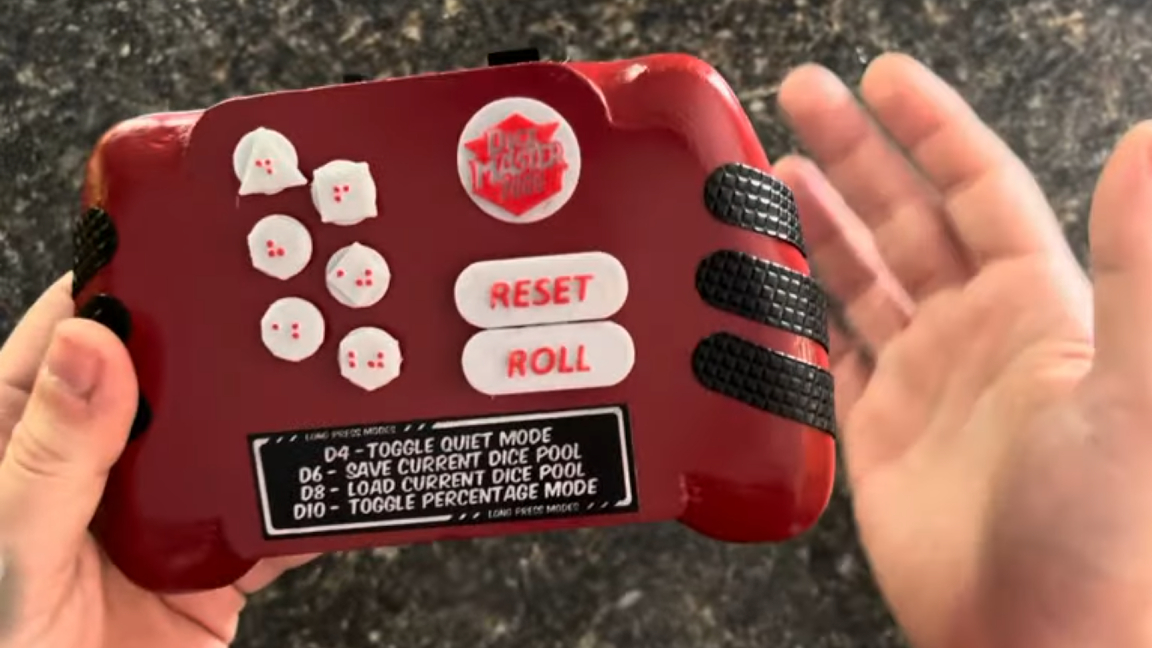
The Raspberry Pi Pico has proven to be an exceptionally capable microcontroller and many makers turn to it when they need to make something unique. If you can't find what you're looking for on the market, why not create it for yourself? That's exactly what maker and developer Hiro has done with his latest project, the Dicemaster 2000. This Pico-powered project is a handheld dice roller that Hiro explains is a gift for a friend who is slowly losing their sight.
The Dicemaster 2000 looks like a red video game controller. It has a series of buttons that have been 3D printed with braille. The buttons are used to set up your hand with different dice options. You can decide how many you're throwing, how many sides each die has and the Dicemaster 2000 will automatically tally your throw for you.
The housing was designed by Hiro just for this project and was 3D Printed. It's made using both red and white filament with tangible design elements that make it easier to navigate by touch. Hiro was kind enough to make the design open source and has shared the files over at Printables for anyone to download and print at home.
The main board powering the Dicemaster 2000 is a Raspberry Pi Pico. It's connected to a protoboard which is wired to the external components. There are a few buttons for input that we mentioned earlier but also a power switch and even access to a microSD card slot on the top of the device.
The Dicemaster 2000 features were programmed by Hiro, as well. While we dont have access to the source code, we at least get a look at how it operates in the demo. Because the project is built around the Pico, we can only speculate but the system is likely running something written in either CircuitPython or MicroPython. Our money is on CircuitPython as it has been used to play audio files in past projects. That said, MicroPython now supports MP3 playback on the Raspberry Pi Pico's RP2040.
This is the second Pico powered dice roller that we have seen this week. Previously we saw Abe's Projects wonderful dice roller which had an OLED screen and user interface. Both of these dice roller projects are excellent examples of makers solving problems using the Raspberry Pi Pico.
If you want to get a closer look at this Raspberry Pi project and see it in action, head over to Hiro's official YouTube channel where you can also follow him for more cool creations.




!["[T]he First and Fifth Amendments Require ICE to Provide Information About the Whereabouts of a Detained Person"](https://images.inkl.com/s3/publisher/cover/212/reason-cover.png?w=600)


